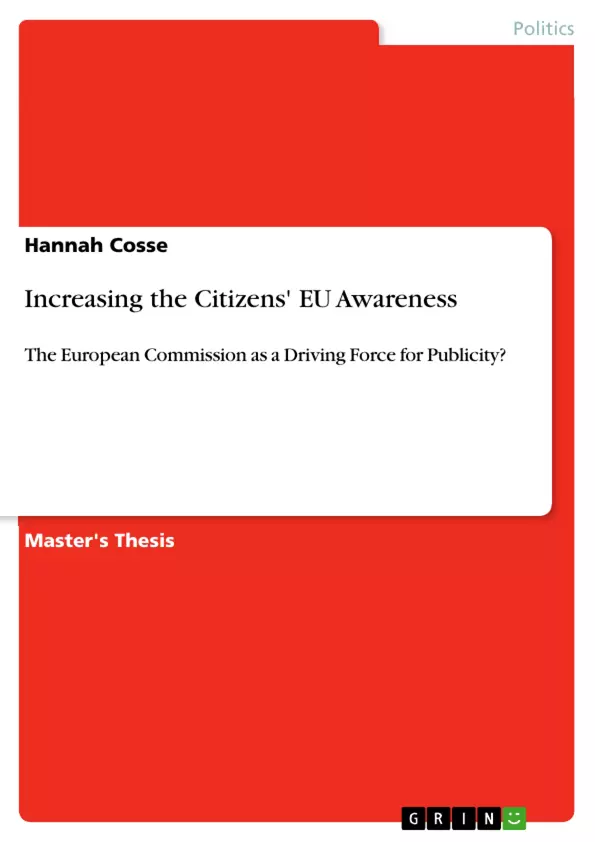In the year of the 50th anniversary of the Treaties of Rome, and the 15th year after the (legal) creation of the European Union by the Treaty of Maastricht, European Integration slowed down considerably due to certain hindrances such as the rejection of the Constitutional Treaty, a low turnout at the last election to the European Parliament, and also the necessary revision of the main ‘future project’, the Lisbon Agenda. However, over the last 15 years we have witnessed a successful process of integration. Notwithstanding this successful story of economic integration and peace and security – one of the most important, but today often neglected attainments of the EU – the process of constant integration seems to have been too fast for the citizens of the European Union: although being legally ‘Europeans’ since 1992, the demos of the Union does not seem to feel connected to its newly gained political entity. Thus, the Union suffers from considerable democracy, legitimacy and ac-countability deficits. One reason - and characteristic at the same time - is the low participation and involvement of the Europeans in the political system of the Union. This assumption is the real starting point of this work. People need to participate to a greater extent in order to gain a more democratic political system in the EU and thus lay the basis for further integration, which is needed to cope with the arising challenges of the 21st century.
But people can only participate in a system they know and knowledge about the EU is quite low. And there is no media attention and therefore a lack of European Publicity.
This work analyses what kind of influence the European Commission can have on this sphere of problems, either by its media policy, or by its communication strategy.
Inhaltsverzeichnis (Table of Contents)
- I. Introduction
- I.1. Research Motivation
- I.2. State of the Art in Research
- I.3. Research Question, Methodology, Preliminary Remarks
- II. The Framework
- II.1. Fitting 'European Publicity' into a Framework
- II.1.a. Sources of (European) Publicity
- II.1.a.1. The Media
- II.1.a.2. The Communication
- II.1.b. Developing the Framework
- II.1.b.1. The Actors
- II.1.b.2. Types of European Publicity
- II.2. Conclusion: The Publicity-Framework
- III. Media Policy
- III.1. A European Media System?
- III.2. Development of European Media Policies
- III.3. Media Concentration and Pluralism
- III.4. Conclusion: The actual role of Media Policies
- IV. Communication Strategy
- IV.1. The Aims and Ways of Communication
- IV.2. Development of the Communication Strategy
- IV.3. Communicating with the Citizen?
- IV.3.a. 'Commission's contribution to the period of reflection and beyond: Plan-D for Democracy, Dialogue and Debate'
- IV.3.b. 'White Paper on a European Communication Policy'
- IV.4. Conclusion: Communication Strategy
- V. Recommendations
- V.1. Completing the Framework
- V.2. Appraisal of Findings
- V.2.a. The Influence of Media Policies on Awareness
- V.2.b. The Influence of the Communication Strategy on Awareness
- V.2.c. Conclusion of Appraisal
- V.3. Recommendations
- V.3.a. ...for Media Policies
- V.3.b. ...for the Communication Strategy
- V.4. Conclusion: Recommendations
- VI. Conclusion
Zielsetzung und Themenschwerpunkte (Objectives and Key Themes)
This thesis examines the role of the European Commission in promoting public awareness of the European Union. The study seeks to understand how the Commission's media policies and communication strategies contribute to increasing citizen awareness of EU affairs. The work aims to identify potential gaps and challenges in these efforts and provide recommendations for improving the Commission's effectiveness in engaging citizens.
- Public awareness of the European Union
- The role of the European Commission in promoting EU awareness
- The influence of media policies on citizen awareness
- The effectiveness of the Commission's communication strategies
- Recommendations for improving the Commission's engagement with citizens
Zusammenfassung der Kapitel (Chapter Summaries)
The introduction lays out the research motivation, outlining the context of European integration and the challenges of low citizen awareness. It also introduces the research question, methodology, and key concepts used throughout the thesis.
Chapter II delves into the conceptual framework of 'European Publicity,' exploring its sources, actors, and different types. This chapter establishes a theoretical foundation for understanding the mechanisms of public awareness and information dissemination.
Chapter III examines the role of media policy in shaping the European media landscape. It explores the development of European media policies, analyzes media concentration and pluralism, and discusses the actual impact of these policies on citizen awareness.
Chapter IV focuses on the European Commission's communication strategy. It examines the aims and methods of communication employed by the Commission, analyzes the evolution of its communication strategy, and critically assesses its effectiveness in engaging with citizens.
Chapter V presents recommendations for enhancing the Commission's efforts to promote public awareness. It proposes concrete measures to strengthen both media policies and communication strategies, aiming to improve the Commission's effectiveness in reaching and engaging citizens.
Schlüsselwörter (Keywords)
The key topics explored in this thesis include European Union, public awareness, European Commission, media policy, communication strategy, citizen engagement, democracy, legitimacy, accountability, and European integration. The thesis analyzes the Commission's role in promoting citizen understanding of EU affairs and explores ways to enhance its effectiveness in achieving this goal.
- Citar trabajo
- Hannah Cosse (Autor), 2007, Increasing the Citizens' EU Awareness, Múnich, GRIN Verlag, https://www.grin.com/document/115317



